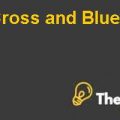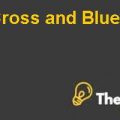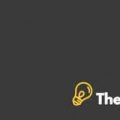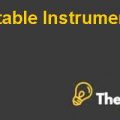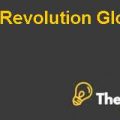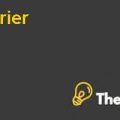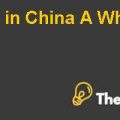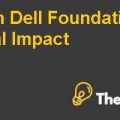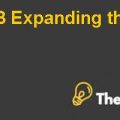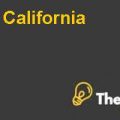
Question 1: Describe the structure of Royal Dutch/Shell Group. Does it differ from the equity listings of other companies that you know?
Answer 1:
The Royal Dutch and Shell Group’s structure was in such a way that all of the subsidiary companies were controlled by the holding group of companies, and these companies include such as Shell Petroleum NV located in Netherland, The Shell Petroleum Company Ltd based in UK and Shell Petroleum Inc. based in United States.These companies further are controlled by the two parent companies which are Royal Dutch Petroleum and Shell Transport & Trading. The ownership is divided in terms of 60/40 ratio.
The alliance between these group of holdings are meant to be like 60/40 that means that all the inflows coming and all the outflows made to shareholders are divided between the two holdings this represents that one share of Royal Dutch and one share of Shell is entitled for the same cash flows.
The structure of the company is differentfrom the equity firms. The main different is that, returns of fund management is based on the performance and then it further divided to the fund managers. The manager gets the rewards in terms of compensation while maximizing the investors’ investment return. But in this case the Dutch is getting paid more than the Shell which means that whatever the earning would be, Royal Dutch gets the maximum out of that inflow and Royal would pay more in terms of outflow and it isindifference from the performance perspective of both companies.
Question 2: What are the ADRs? Why might companies find it attractive to issue ADRs? Why would investors be interested in this method of raising equity capital?
Answer 2:
American Depository Receipts, is a certificate that can be negotiable and issued by the banks located and operating in the US. This negotiable certificate represents as a number of shares in foreign shares that is issued and traded in the US stock exchange.
Companies find it attractive because ithelpsthecompanies to reduce its administrative cost with addition to save the Duty cost. If a company would not have the ADR then they must pay the higher Duty on each transaction it would make and for that transaction, company would have to bear the additional cost for administrating that transaction.
The investors are interested in ADR’s to raise equity capital as it increases the chances to get the equity at lower cost. This is because of the reason that, through ADR, the investors enter into the large market where equity investors are easily available to invest in the company. This would also reduce the legal requirements. Through ADR,a foreign firm enjoys all the benefits of US listed firms without losing its original identity. The cost of listing in the US stock exchange is high but using the ADR it reduces the cost of listing in the New York Stock Exchange.
Many companies issueADRs,because it increases the exposures in terms of raising capital in the global market. It increases the liquidity of a stock of the company and develops the trust in local equity investors to invest into the company.
On the other hand, from an investor’s perspective it increases its portfolio into global market where an investor invests into diversified portfolio that ensures the maximum returns of invested capital. It reduces the risks involved in direct investment into foreign market and investors gets the benefit in investing ADR’s as the exchange rates of USD is competitive against other currencies that generates higher returns.
Question 3: Identify price differentials between different equity listings of the Royal Dutch/Shell Group. How can they be explained? What percentage of the particular price differentials you identified can be due to the explanations you suggested?
Answer 3:
The equity listing of Royal Dutch and Shell have some difference in price as these two companies are listed in nine stock exchanges and both companies are dealing in different currencies such as, Dutch is dealing in Dollars and Netherland’s Guilders and Shell is dealing in either dollar or in UK pound. The Dutch converts its inflows in dollars with the exchange rate of 1.6114 (fl/USD) and Shell in dollars with the exchange rates of 0.6443 (£/USD). The difference in prices is resulted due to the fluctuation of exchange rates and that fluctuation isdifferent with respect to Netherland against USD and UK pound against US dollars.
This difference in terms of percentage is around 13.8% for Europe market and 11.7% for New York market. In terms of amount the price difference is $17.15 for Europe and $14.82 for New York.
Table 1 is showing the arbitrage price differentials given below:
Table 1:
| Security Price/Location | Difference |
| Imputed US$ price of shares in Europe (1 / 2) | $ 127.97 |
| Imputed US$ price of shares in Europe (3 x 4) | $ 61.00 |
| Quoted US$ price of shares in New York | $ 59.50 |
| Geographic differential (5 / 6 - 1) |
1.83% |
|
Royal Dutch / Shell equivalent price |
|
| Europe | $ 17.15 |
| New York | $ 14.82 |
|
Royal Dutch / Shell Differential (8a / 8b) |
|
| Europe |
13.8% |
| New York |
11.7% |
Question 4: Is there an arbitrage opportunity in the price differentials you identified? What kind of arbitrage transactions would you propose to exploit these opportunities?
Answer 4:
The price differential creates....................
This is just a sample partial case solution. Please place the order on the website to order your own originally done case solution.
Royal Dutch Shell and equities are securities with related cash flow, so that the ratio of stock prices must be corrected. In fact, the ratio varies widely, moving from the markets where securities are actively traded. Royal Dutch trading more active in the Netherlands and American markets, while Shell trades more actively in the United States. As a result, Royal Dutch / Shell relative price moves positively with the Netherlands and the U.S. markets and adversely from the UK market. Arbitrability of these differences and their causes are the main focal points of the event. "Hide
by Kenneth A. Froot, Andre F. Perold Source: Harvard Business School 19 pages. Publication Date: Mar 04, 1996. Prod. #: 296077-PDF-ENG

